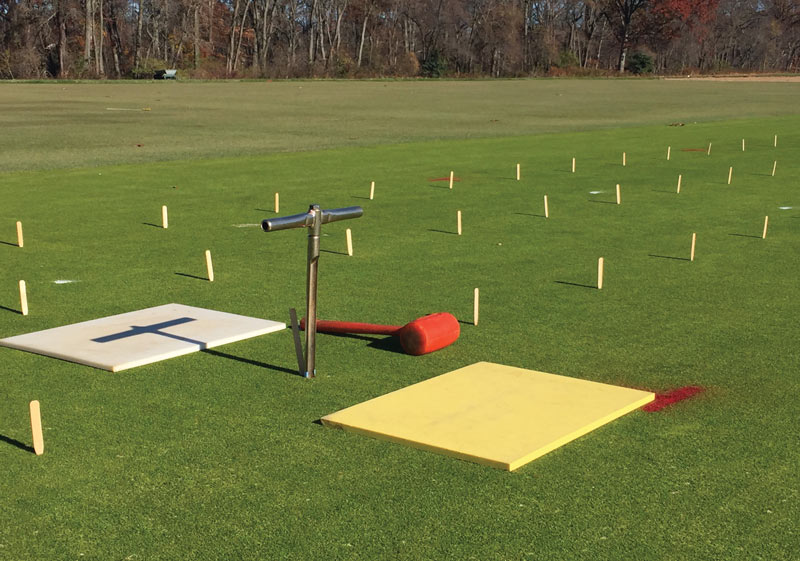
Photo by Kyle Genova
A two-year field study carried out at Rutgers University in North Brunswick, N.J., examined the effects of combining four rates of potassium (K) with lower or higher levels of nitrogen (N) to control anthracnose (caused by Colletotrichum cereale) on an annual bluegrass (Poa annua) putting green.
The turfgrass was mowed at 0.11 inch (2.8 millimeters). K and N were applied over a 24-week period beginning April 28 in 2016 and April 13 in 2017. K was applied every two weeks at 0, 3.6, 7.1 and 14.3 pounds K2O/acre (0, 4, 8 and 16 kilograms K2O /hectare) as a potassium sulfate solution to plots treated with N (as a urea solution) at either 4.4 pounds/acre (4.9 kilograms/hectare) every 28 days (26 pounds/acre or 29 kilograms/hectare annually) or 4.4 pounds/acre every seven days (104 pounds/acre or 117 kilograms/hectare annually).
Editor’s note: In many cases, a combination of cultural practices can effectively suppress anthracnose, eliminating the need for fungicides. Learn much more in Anthracnose on annual bluegrass turf: Best management practices.
In general, disease severity, which was measured as area under the disease progress curve in both years, was reduced as K and N fertilization increased. With the exception of two rating dates in June 2016, greater anthracnose reduction was seen in plots treated with all rates of K (except for no K) and higher nitrogen levels. Compared with treatments with no K, plots that received K reduced anthracnose severity 55% to 59% in 2016, and 49% to 54% in 2017. Plots that received any of the K rates (except no K) and weekly N applications showed anthracnose reductions of 74% in 2016 and 68% in 2017.
— Kyle M. Genova; Bruce B. Clarke, Ph.D.; and James A. Murphy, Ph.D., Rutgers University, New Brunswick, N.J.
Editor’s note: An earlier version of this summary was published in the 2019 ASA-CSSA-SSSA Meeting Abstracts, ASA-CSSA-SSSA, Madison, Wis.
Teresa Carson is GCM’s science editor.